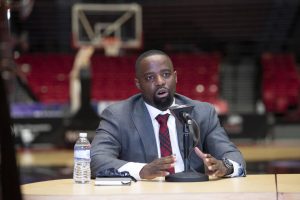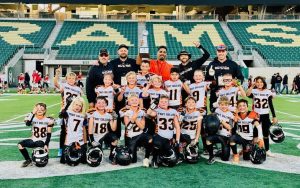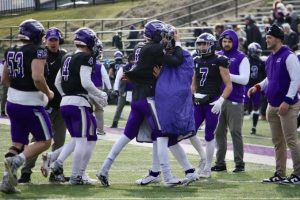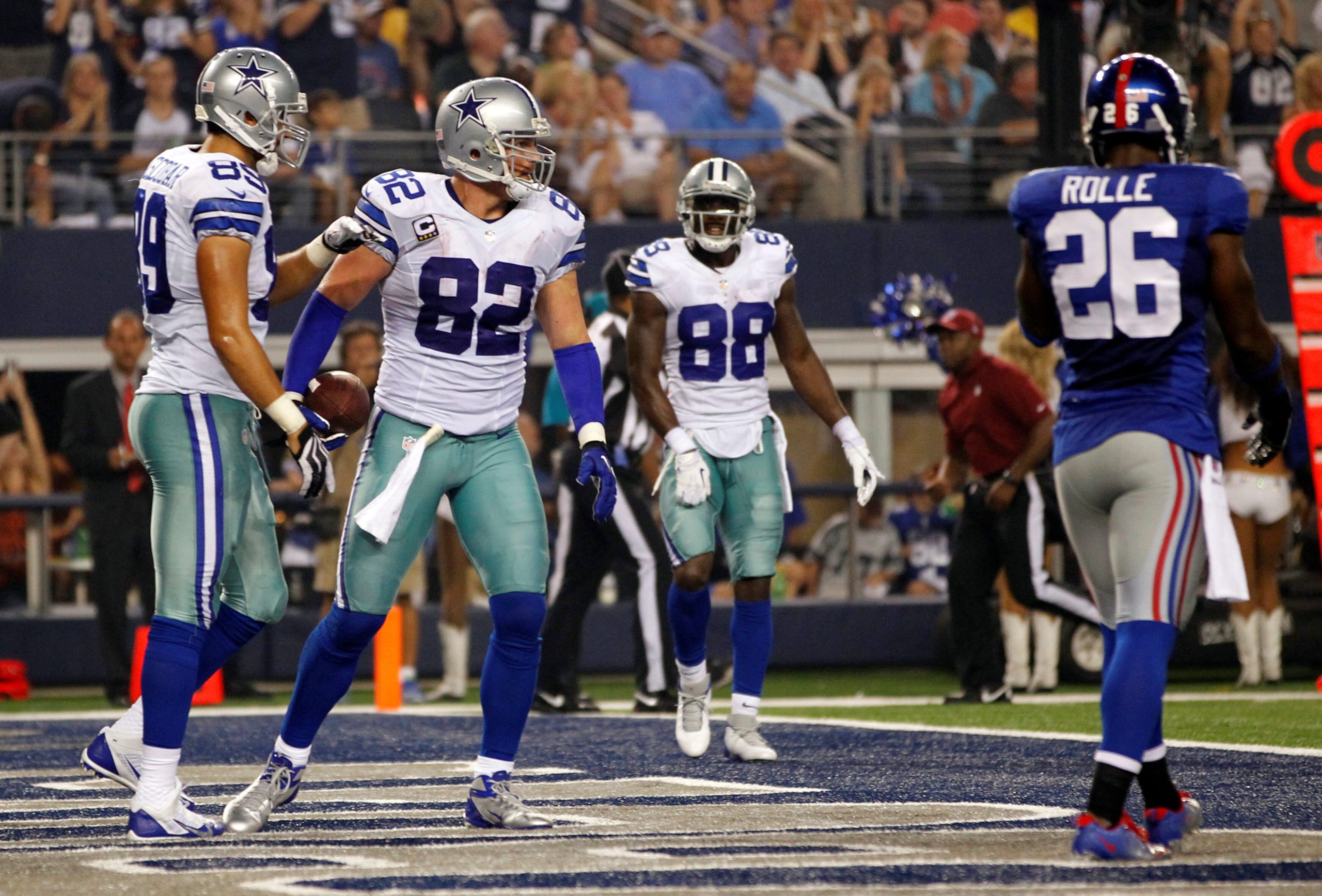
FILE PHOTO: (L-R) Dallas Cowboys tight end Gavin Escobar, tight end Jason Witten and wide receiver Dez Bryant celebrate Witten's touchdown near New York Giants safety Antrel Rolle in the first half of their NFL football game in Arlington, Texas September 8, 2013. REUTERS/Mike Stone /File Photo
Gil Brandt, a Hall of Famer who helped the Cowboys become “America’s Team,” passes away at the age of 91
DALLAS (AP) — Gil Brandt, one of the three men who helped the Dallas Cowboys become known as “America’s Team” in the 1970s—coach Tom Landry, general manager Tex Schramm, and player—has passed away. He was ninety-one.
As per the Pro Football Hall of Fame, Brandt passed away early on Thursday. Although Brandt’s cause of death remained unknown, his health had been deteriorating in previous years.
Alongside the media-savvy Schramm and the austere, fedora-wearing Landry, Brandt oversaw player personnel, but he had to wait nearly 30 years to be inducted into the Hall of Fame.
By the time Brandt was recognized as a contributor, it was due as much to his ability to stay active in the NFL by embracing the social media era as it was to the Cowboys’ early 1960s computerized draft process invention.
Hall of Fame president Jim Porter remarked, “You can’t tell the story about the success of the Dallas Cowboys and their two-decade run of winning seasons from the mid-1960s to mid-1980s without mentioning Gil Brandt.”
“In my opinion, and from a personnel standpoint, Gil should have been the first pick,” stated former Dallas running back Calvin Hill, who was selected in the first round in 1969.
Brandt, who always said he was never overshadowed, ultimately joined Landry (1990) and Schramm (1991) in Canton, Ohio, in 2019.
Before being inducted, Brandt said to The Associated Press, “I think we all got credit.” Furthermore, I believe Tex appropriately received more recognition than Tom and me. Because, in reality, he was a highly media-savvy individual. I was not spoken to by the Sports Illustrated caller, nor was I spoken to by him. They conversed with Tex.

For the first 29 seasons of the franchise, Schramm, Landry, and Brandt were together. After Jerry Jones acquired the club in 1989 and dismissed Landry, Brandt was the last of the three to go. Shortly after, Schramm quit (Jones has been the team’s general manager for the 34 years he has owned the franchise).
Cliff Harris, who attributes his Hall of Fame career as a safety to Brandt discovering him as an undrafted player out of small Ouachita Baptist in Arkansas, laughed and questioned, “How could you not be overshadowed by Tex and Tom?” “Everyone was in.”
According to Brandt, the late Raiders owner Al Davis attempted to sign him prior to the 1989 draft by claiming to have heard that Jones would dismiss him following the draft. Though Davis proved to be correct, Brandt claimed he probably wouldn’t have done it anyhow because Dallas had become the Wisconsin native’s home. Brandt didn’t believe it.
Despite needing a wheelchair on game days due to health issues, Brandt remained active in the club and his animosity toward Jones did not endure long.
A few weeks before to being inducted into the Hall of Fame, Brandt even requested Jones to be his presenter in Canton, and Jones honored him by placing him in the club’s ring of honor.
Jones referred to Brandt as “a true icon and pioneer of our sport” in a statement.
Gil was a key component of the Dallas Cowboys’ early success and remained a fantastic representative of the team for many years afterward, according to Jones. “Throughout the National Football League, he served as a mentor and friend to innumerable executives, coaches, players, and broadcasters in addition to me.”
At Schramm’s insistence, Brandt collaborated with IBM to develop a system that gave numerical values to both observable metrics like strength and agility and intangible traits like character, competitiveness, and “mental alertness.” The club was able to rate players thanks to the numbers that were kept on punch cards and fed into enormous computers.
Story of Vince Lombardi teasing the Cowboys, presumably wondering whether their computer malfunctioned, was one of Brandt’s favorite stories. Dallas had delayed the 1964 selection, awaiting Mel Renfro’s medical records. In round two, the Cowboys selected the defensive back who would go on to become a Hall of Famer.
“I believe Gil was significantly ahead of his time in terms of quantifying numerous aspects of scouting,” Hill remarked. “They could try to quantify it by looking at all the individual factors that go into making a player and a teammate.”
While they discovered a four-time All-Pro on the basketball floor at Utah State in cornerback Cornell Green, the Cowboys also developed a Hall of Famer in receiver Bob Hayes of Florida A&M.
Among the high draft selections from larger colleges were several future stars, such Alabama linebacker Lee Roy Jordan, the Cowboys’ first pick two years later, and TCU’s Bob Lilly, who was selected first overall in 1961.
More than anything else, though, Brandt’s roster of undrafted or lower-round selections—many of whom came from lesser schools—was particularly noteworthy. Brandt frequently brought up Jethro Pugh, an underappreciated defensive lineman selected from little Elizabeth City State in North Carolina in the eleventh round of the 1965 draft.
Along with Roger Staubach, Pugh was a member of the first five Dallas teams to make it to the Super Bowl. A year prior to Pugh, the Cowboys selected the Hall of Fame quarterback in the 10th round, even though they knew Staubach’s arrival would be postponed for five years due to a Navy commitment.
Roger Goodell, the commissioner of the NFL, stated that Gil Brandt was a pioneer in the purest meaning of the word. As the Cowboys’ personnel architect for almost thirty years, he created a computerized player assessment system that revolutionized the way organizations found potential. He was the first to scout athletes from other sports and from countries outside of the United States. Without Gil Brandt, the NFL would not be the same today.
Due to his tenure, Brandt also became one of the NFL’s few unofficial historians; this was an advantageous role for him to have as the league commemorated its 100th anniversary the same year he was inducted into the Hall of Fame. On Twitter, he has over 150,000 followers.
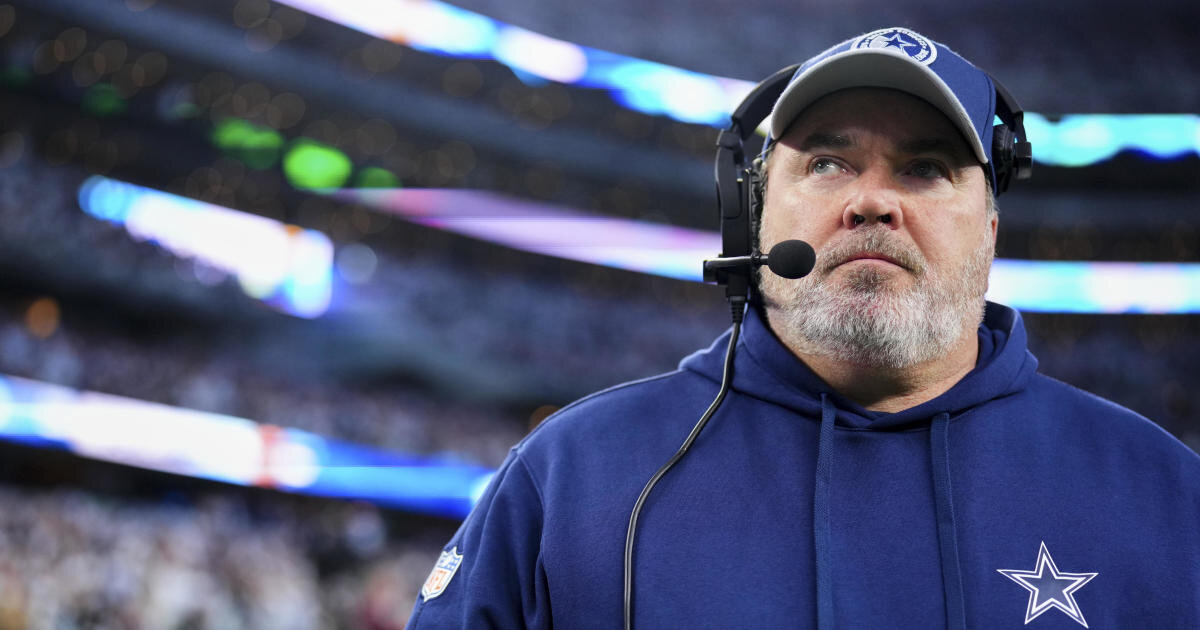
“I think I’ve changed who I am,” Brandt declared in 2019. “From someone who did fairly well with the Cowboys to someone who is currently doing fairly well with social media.”
Having hosted a weekly program on satellite radio, Brandt mostly vanished after saying hurtful things in the wake of quarterback Dwayne Haskins’ death in April 2022 from an accident with a dump truck on a Florida expressway.
Brandt compared Haskins’ choice to enter the NFL with the circumstances surrounding his death, claiming that Haskins had been urged to remain in school rather than turn pro.
Brandt remarked on the radio program, “I hate it when someone gets killed or dies, but he was a guy that was living to be dead, so to speak.” Anytime someone passes away, it’s awful, but when you’re 24 years old and have your entire life ahead of you, it’s much more so. However, perhaps if he attended for a full year, he

